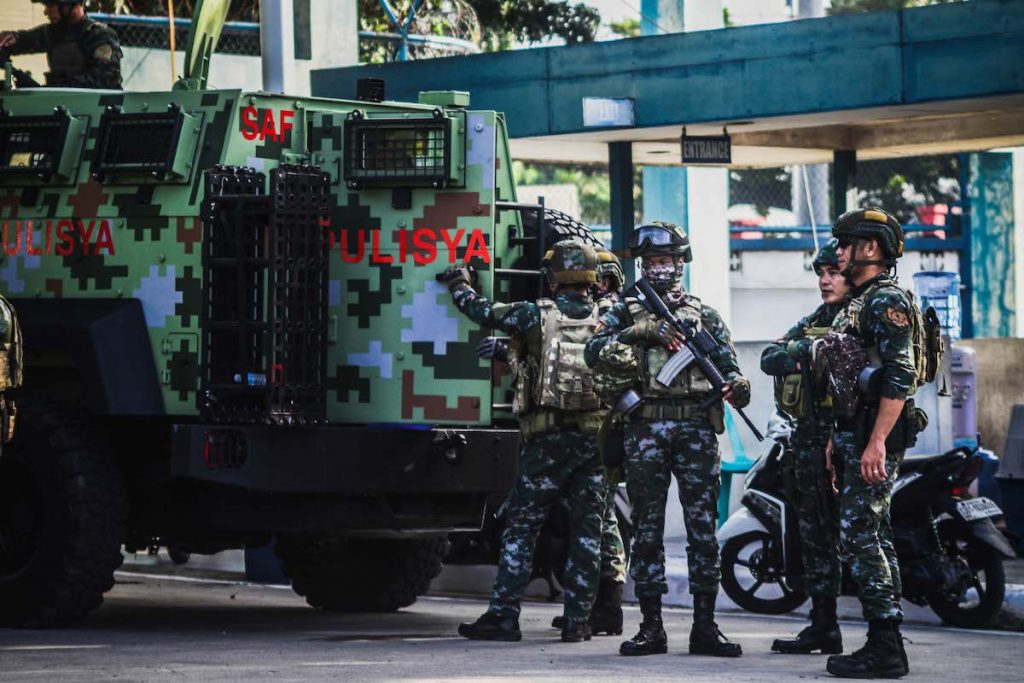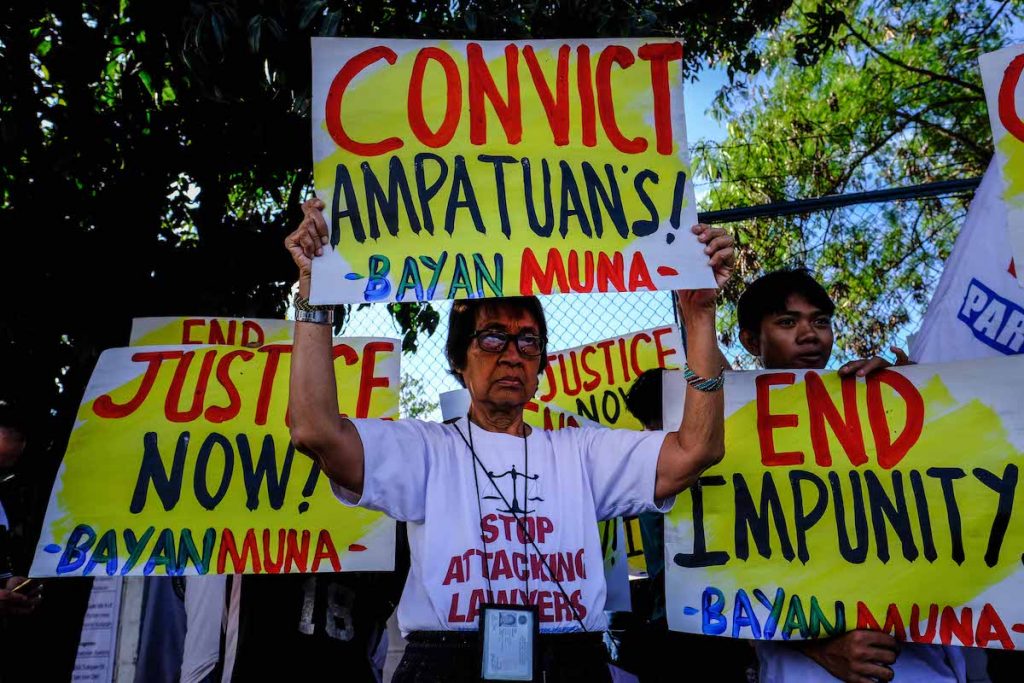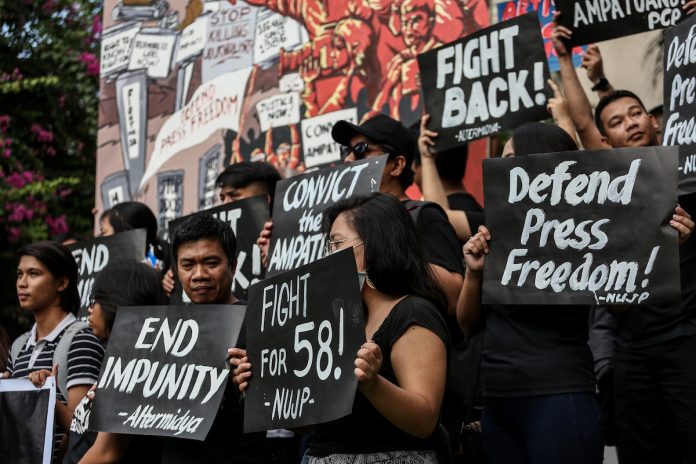Old wounds fester where impunity runs rampant. This is true of all crimes which remain unresolved, more so the murder of journalists.
But what about the Ampatuan massacre? Is Unesco’s recent statement, that it has been finally resolved, even worth the paper it was written on?
In a press release circulated by the Presidential Task Force on Media Security (PTFoMS), the United Nations Educational, Scientific and Cultural Organization’s (UNESCO’s) Assistant Director-General for Communication and Information, Moez Chackchouk, in a letter to Ambassador Theresa Lazaro, was quoted as saying:
“I am pleased to confirm that we will classify these as resolved (referring to the Ampatuan massacre), both in the UNESCO Observatory of Killed Journalists and in the 2020 Director-General Report on the Safety of Journalists.”
The Massacre
Thanks to Al Jazeera, a timeline of what had transpired on that blood-soaked road to Shariff Aguak had been noted down.
If you recall, the Ampatuan Massacre happened in the outskirts of Maguindanao where 58 people, including 33 journalists, were waylaid by more than 200 of the Ampatuan family’s henchmen on Nov. 23, 2009.
The convoy was on its way to file the Certificate of Candidacy of Eshmael Mangudadatu who ran for governor. But instead of the candidate, his wife, Genalyn, led the convoy with several members of the media. They never made it to the provincial capital.
This led former president Gloria Macapagal Arroyo—a close ally of the Ampatuan clan—to declare martial law in Mindanao days after what is called the worst election-related violence in the history of Philippine polls.
Andal Ampatuan Jr., whom witnesses said was the mastermind of the attack, was arrested by authorities together with his father and brother in December 2009. Cases of multiple murder were filed against them. January 5 saw more than 200 of Ampatuan’s men, including police officers, arrested for involvement in the crime.
During the arraignment in June 2010, Andal Ampatuan Jr. pleaded not guilty. Five days later, a prosecution witness was gunned down in Maguindanao. In March 2012, another prosecution witness was killed. A couple of other witnesses were murdered sometime November 2014.
Atty. Salvador Panelo, who would later sit in Malacañang as President Rodrigo Duterte’s spokesperson, led the legal team in defense of the Ampatuan clan.
After close to a decade and numerous deaths and recantations, the verdict was delivered in a Manila court in December 2019: 57 counts of murder. Quezon City Regional Trial Court Branch 221 Judge Jocelyn Solis-Reyes sentenced them to reclusión perpetua.

Continuing sociopolitical context
Understandably, Department of Justice secretary Menardo Guevarra, who also chairs the Presidential Task Force on Media Security, PTFoMS Executive Director Undersecretary Joel Sy Egco, and Presidential Communications Operations Office Secretary Martin Andanar, lapped up UNESCO’s serving of praise.
“This is a testament to the Administration’s steadfast resolve to protect our media workers against violence and to defend freedom of the press. We are grateful for this latest recognition given to the Philippine Government by UNESCO,” Andanar said in one report.
Usec Egco added that the recognition of the government’s efforts to preserve freedom of expression could improve the country’s standing in the Global Impunity Index filed by the Committee to Protect Journalists (CPJ) each year.
While legally, the Ampatuan massacre may seem resolved at first glance, we should remember that the verdict is still up for appeal. Likewise, 50 other suspects, including one principal suspect, are still at large.
As for Sec. Andanar’s claims that it is a testament of this administration’s “steadfast resolve to protect media workers against violence,” let us not forget that the Ampatuan massacre happened during Gloria Macapagal Arroyo’s term. It has nothing to do with murdered journalists under Duterte’s watch.
As of this writing, 17 journalists have been murdered under the incumbent administration. While cases have been filed in some, not a single resolution of any of the cases is yet in sight.
In the 2019 Global Impunity Index, an annual tally made by the CPJ, the Philippines stands 5th next to Somalia (1), Syria (2), Iraq (3), and South Sudan (4).
UNESCO itself said that “nine of 10 murders of journalists had gone unpunished in the last 10 years.”

Freedom of expression in jeopardy
It couldn’t be said enough that while the media enjoys relative freedom to express their views under the Duterte presidency, what happens next proves the opposite.
After four years in office, the current regime has failed to put an end to the murders of journalists under its watch. Usec. Egco himself admits that after four years into Duterte’s term, his department is still pushing for two bills favoring journalists—the Media Workers Welfare Bill and the Freedom of Information Bill.
Instead, Congress passed the Anti-Terrorism Bill where some of its provisions endanger the lives of critics and activists.
Campus journalists weren’t spared the indignity of harassment. In one of my interviews with former president of the College Editors’ Guild, Jose Mari Callueng, he said:
“Under the term of President Duterte, one of the glaring cases of campus press freedom violation is the withholding the release of the printed magazines of a student paper with contents criticizing the government’s war on drugs […] This tells us that protecting the freedom of the press, even in campuses, is not a priority of this government.”
No friend of press freedom
In an attempt to call the attention of UNESCO on the matter of their statement released by the PTFoMS, 18 organizations and 164 individuals, mostly journalists, signed on to a petition for UNESCO to review “this wide lens as it applies to the Ampatuan trial and the court decision in 2019 so as not to betray the hopes of the families of the victims who are still awaiting justice.”
The letter was addressed to UNESCO Director General Audrey Azoulay through the DG Secretariat last September 12, 2020.
Copies of the petition were forwarded also to: Michelle Bachelet, UN High Commissioner for Human Rights; Agnes Callamard, UN Special Rapporteur on extrajudicial, summary or arbitrary executions; Irene Khan, UN Special Rapporteur on the promotion of the right to freedom of opinion and expression; Peggy Hicks Senior Director, UN High Commissioner on Human Rights (Lead on Violence Against Journalists Strategy); and Guilherme Canela De Souza Godoi, Chief of Section, Section of Freedom of Expression and Safety of Journalists, among others.
As of this writing, no reply has been received from UNESCO.
Nothing will change the fact that Duterte is no friend of press freedom. To him, the press only has two choices: either journalists side with him or against him.
Those who’d choose to stand against this regime’s tomfooleries and crimes against the Filipino people will find themselves either shut down or shot down.
Choosing to look the other way helps little in resolving the State’s animosity against journalists.
Joel Pablo Salud is an editor, journalist and the author of several books of fiction and political nonfiction. The views and opinions expressed in this article are those of the author and do not necessarily reflect the official editorial position of LiCAS.news.









